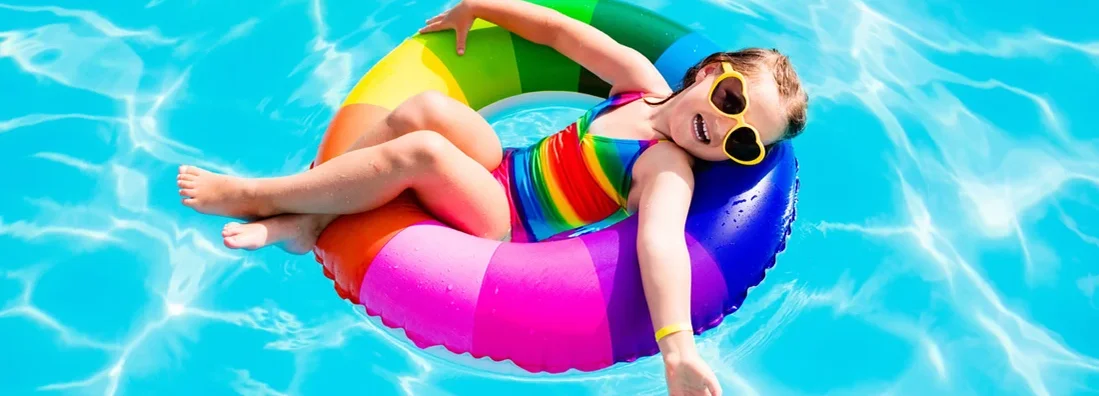Buying a House
Seven Absolutely Essential Summer Pool Safety Tips

Jeff Green has held a variety of sales and management roles at life insurance companies, Wall street firms, and distribution organizations over his 40-year career. He was previously Finra 7,24,66 registered and held life insurance licenses in multiple states. He is a graduate of Stony Brook University.

When you add a pool to your home, the goal is most likely to bring more relaxation to your environment. But without the proper precautions, not only can accidents happen, but you can set yourself back thousands of dollars or even more in insurance claims. That makes proper pool safety the key to the actual enjoyment of your new feature.
With drowning being the leading cause of unintentional death in the US and a reported 48% of swimming injuries occurring at residential pools, the time to implement proper pool safety is now. An independent insurance agent can also help by getting you equipped with all the insurance coverage you need. But up first, take some time to review these potentially life-saving pool safety tips.
Seven Absolutely Essential Summer Pool Safety Tips
The majority of pool accidents happen at home, which in part leads to insurance companies viewing the addition of a pool to your property as adding a potential risk, as well. Because of this, all pool owners can expect higher homeowners insurance premium rates. But using the following safety tips, you can not only help minimize the dangers of the pool for family members and guests on your property but also potentially keep your insurance rates reasonable.
1. Security Leads to Safety
When considering the security of your pool, three layers of protection are commonly recommended:
- Fencing: Secure the pool area by installing a fence that can't be climbed over. Make sure the fence surrounds the entire pool and includes a self-closing and latching gate. If for some reason you can't put a fence around the pool itself, install a fence around your backyard instead.
- Safety alarms: For extra security, install safety alarms. These should be placed on doors and windows facing the pool. It's extra helpful to place a floating alarm inside the pool as well.
- Pool safety cover: There are all kinds of pool safety covers available to protect children and other guests from accidentally falling into your pool and drowning. Find an automatic pool cover that locks with a key for the best chance of keeping folks out of your pool while it's not supervised.
Adding these simple security measures can turn your pool from a potential danger zone back to a safe, relaxing feature when used properly.
2. Know Your Swimmers
Never allow anyone to enter your pool if you're unsure of their ability to properly swim and hold their head above water. Do not leave a poor or still-learning swimmer unattended in the pool at any time.
Make sure to supervise guests, etc. in your pool at all times, regardless of skill level. Having a responsible, focused adult present to monitor those in the pool, whether they're children or adults, is ideal. You can also hire a lifeguard for a day if you'll be hosting a pool party so you can be assured that at least one person won't be drinking or engaging in other distractions.
3. Keep Your Pool Clean and Chemically Treated
Make sure to regularly perform chemical tests on your pool to confirm it's properly balanced. Don't let anyone into the pool until this test has been performed.
Balancing pool chemicals has also become a bit more complex over time as many folks are shifting away from chlorine and favoring bromine, saline, minerals, etc. All these different chemicals require different mixtures to maintain the ideal balance. If the water's balance is off, bacteria can grow in the pool which can cause infections or even worse in swimmers who use it.
4. Inspect Your Pool Thoroughly Before Every Use
Don't ever assume your pool is safe to jump into right away. Always walk around the pool's perimeter before letting anyone use it. Check for things like:
- Clogged filters
- Leaks
- Floating objects
- Mess from birds, etc.
You'll also want to inspect all hoses and mechanical equipment before every incidence of pool usage.
5. Know the Laws for Pool Ownership
Understanding the laws before owning a pool is critical. The Pool and Spa Safety Act (P&SS Act) is necessary to review before installing one on your property, or even buying a house that already has one installed. This law requires every pool to use specific drainage systems and safety covers that adhere to federal standards.
You can find out if you comply with the P&SS Act by checking out the materials provided by the National Swimming Pool Foundation. This foundation offers training courses and lists of laws and codes for pool safety by state.
6. Have an Emergency Plan
Since accidents do happen, it's also critical to have an emergency plan already in place if one occurs on your property. This can help you better prepare for worst-case scenarios.
Consider the following in your pool safety emergency plan:
- Rescue techniques: When someone's drowning in your pool, your first instinct may be to jump in to try to save them. But this isn't always the best course of action, unless the person has already sunk to the bottom of the pool or is floating on top of the water, unconscious. But if someone's flailing around in your pool, move on to method two below.
- Rescue tools: Pool poles, floatation devices, and life vests must be kept beside the pool at all times. If someone is flailing in the water, utilize these tools to help them float or to pull them out of the pool, or both. Don't risk both of your safety by jumping into the water to try to grab someone who hasn't sunk to the bottom or isn't floating unconscious.
Knowing how to use the proper rescue techniques and tools before ever letting anyone use your pool is critical for being prepared for disaster.
7. Have the Right Liability Coverage in Place
If an incident with your pool occurs, you'd need to rely on the liability coverage provided by your homeowners insurance policy. Since pool incidents involving injury or illness can get expensive, it might be necessary to increase the coverage limits in your policy if you've installed a new pool. Many standard home insurance policies come with a liability coverage limit of between $100,000 and $300,000, which may not be enough.
It's often recommended to boost this coverage up to a limit of at least $500,000 or even more to be able to cover medical bills, lawsuits, third-party property damage, etc. that could arise from a pool-related incident at your home. You might also want to talk to your independent insurance agent about adding an umbrella insurance policy to increase your liability coverage limit to $1 million or even more. If you regularly host pool parties or have guests over to your property to use the pool, adding umbrella coverage can be extremely helpful.
Why Choose an Independent Insurance Agent?
Independent insurance agents simplify the process by shopping and comparing insurance quotes for you. Not only that, but they’ll cut through the jargon and clarify the fine print so you'll know exactly what you’re getting.
Independent insurance agents also have access to multiple insurance companies, ultimately finding you the best home insurance coverage, accessibility, and competitive pricing while working for you.
https://www.poolsafely.gov/wp-content/uploads/2016/05/PS_Drownings-Infographic2016_v4.png
https://www.iii.org/article/pool-safety-and-insurance
https://www.cpsc.gov/s3fs-public/2020-Submersion-Report-4-29-20.pdf
https://adventure.howstuffworks.com/outdoor-activities/water-sports/swimming-pool-safety-act.htm
